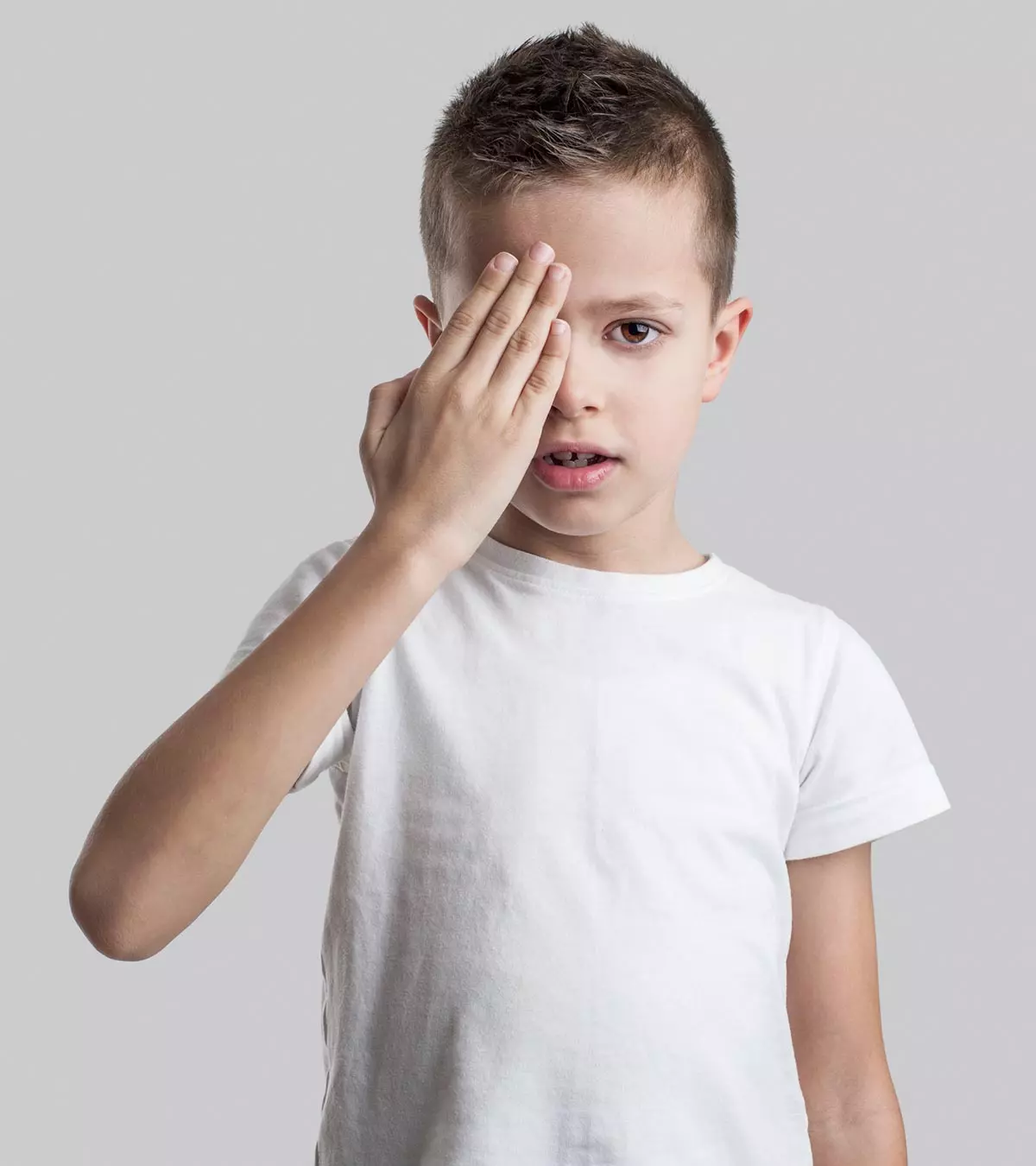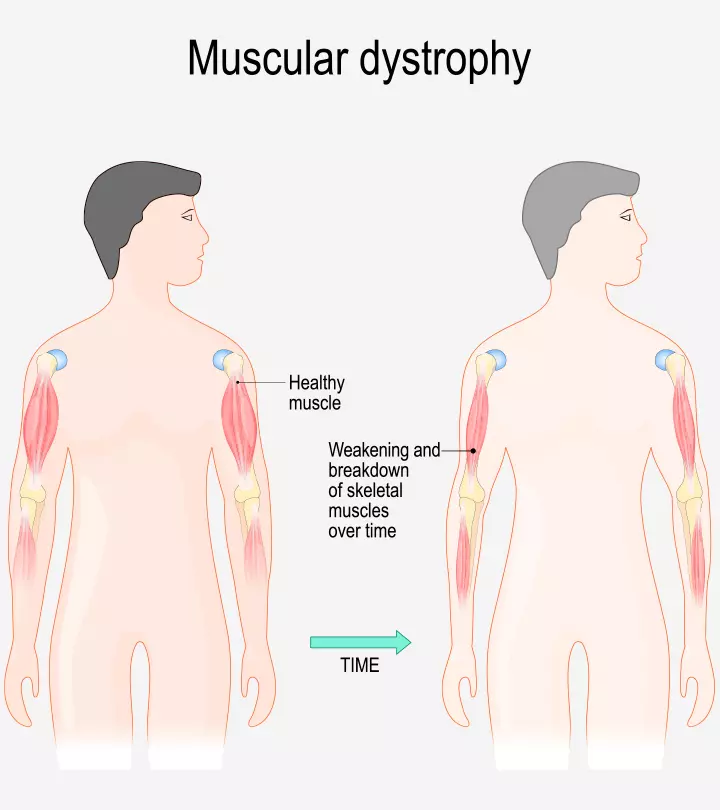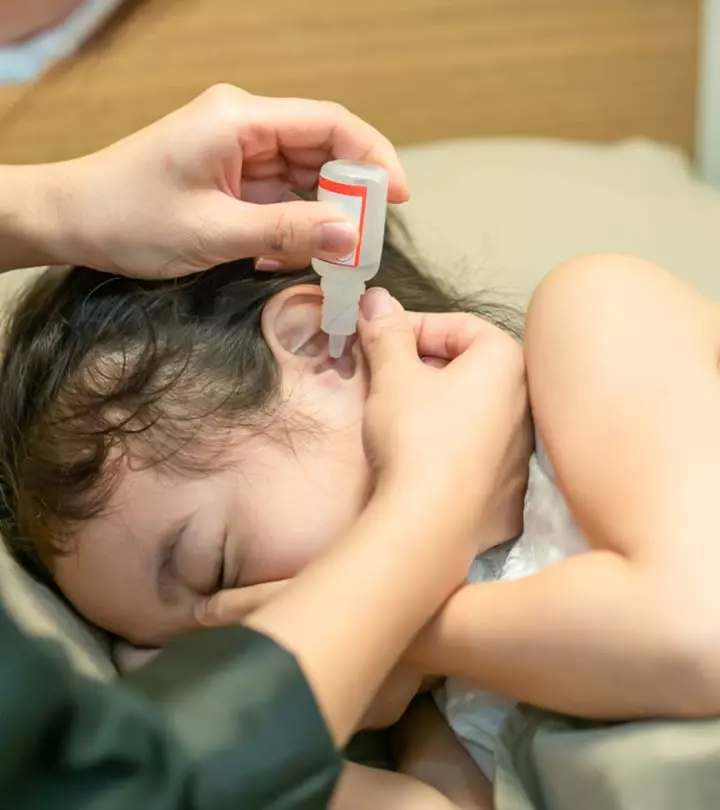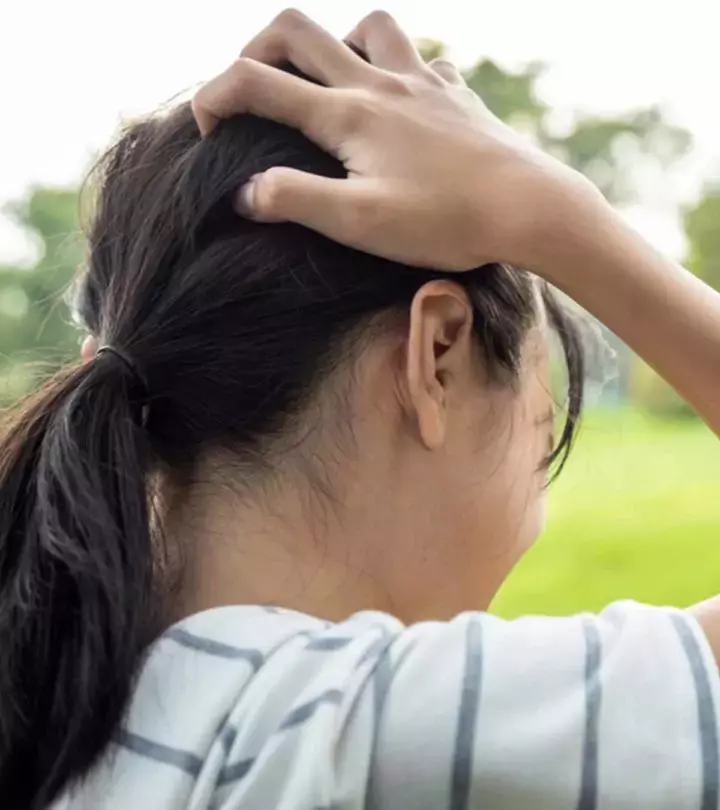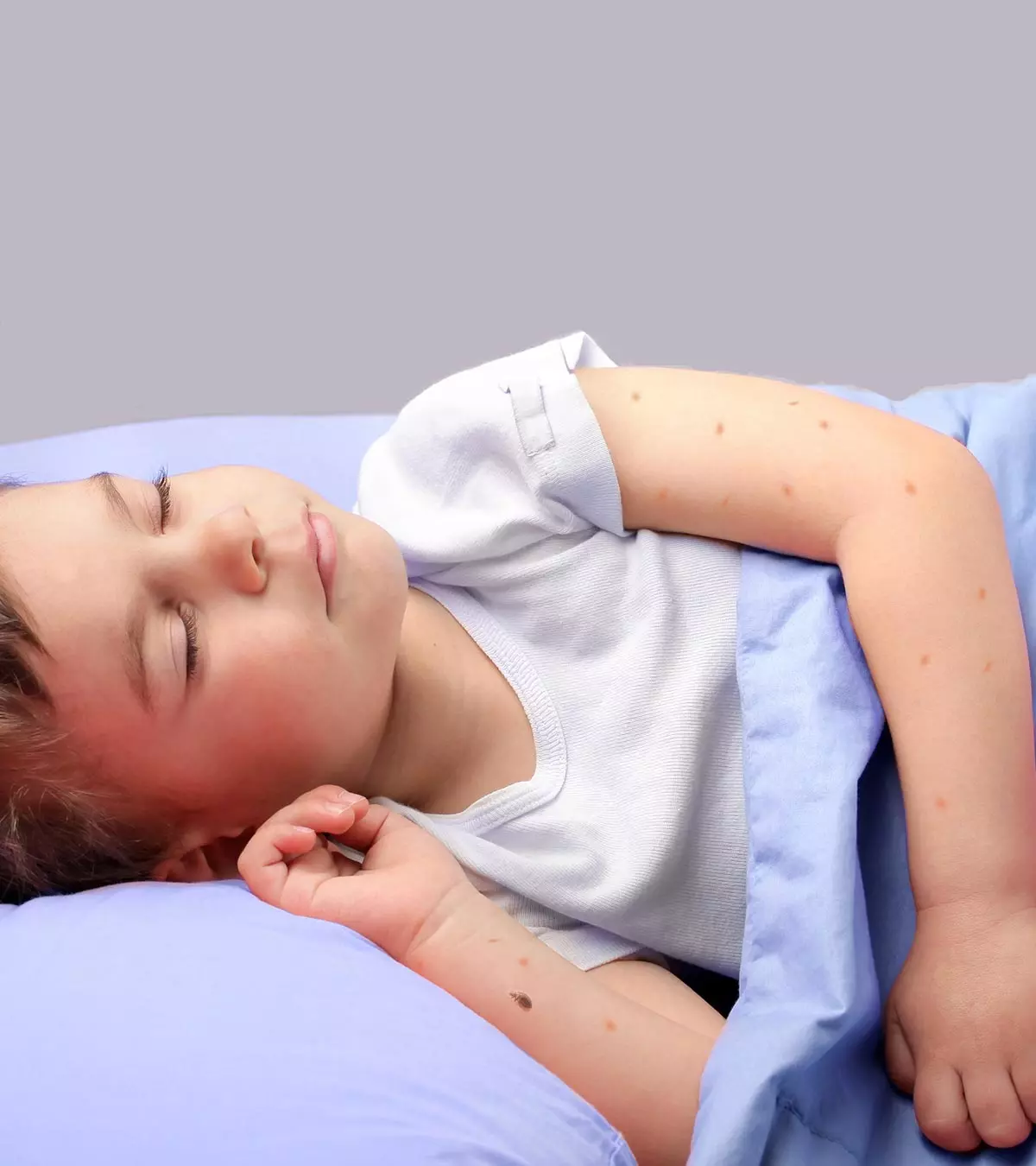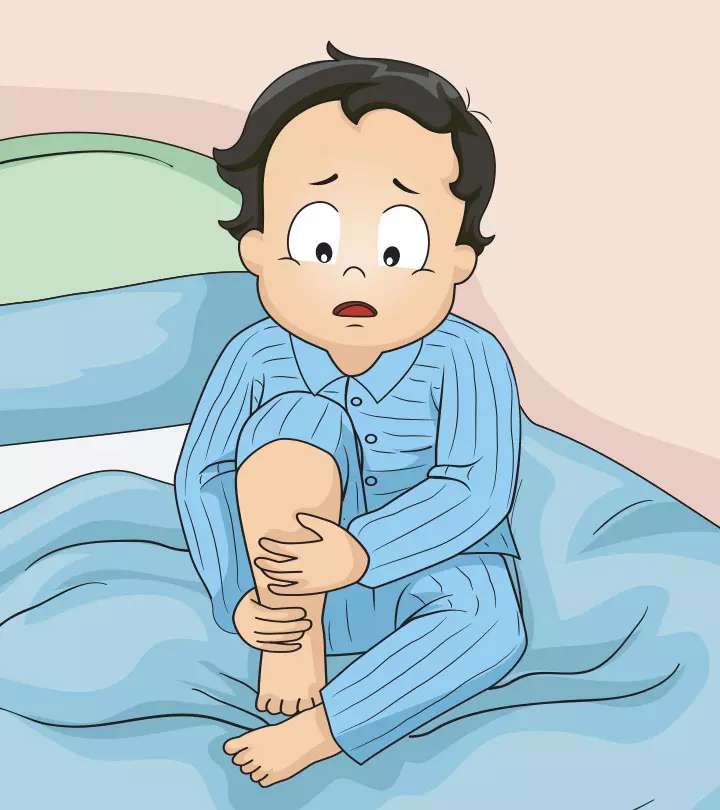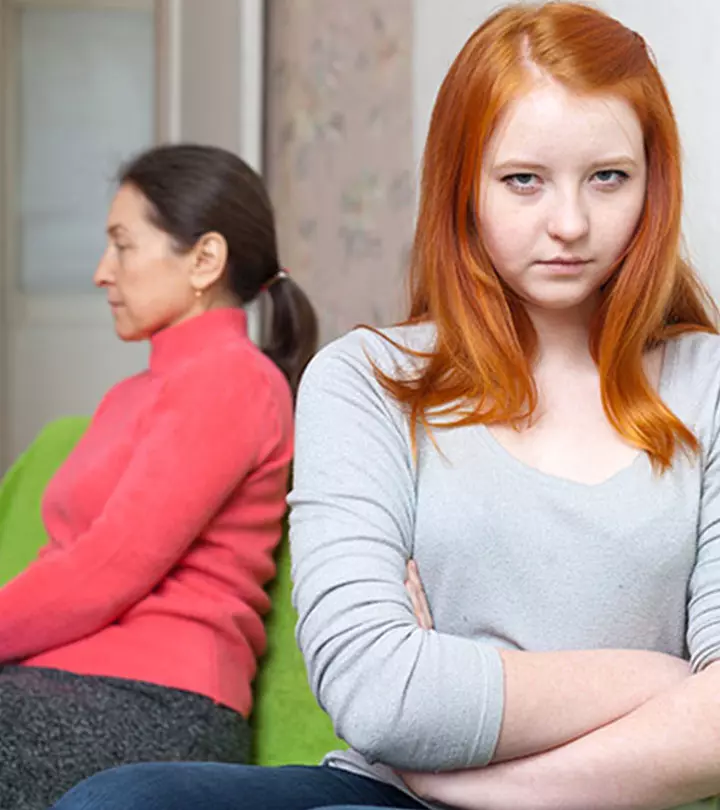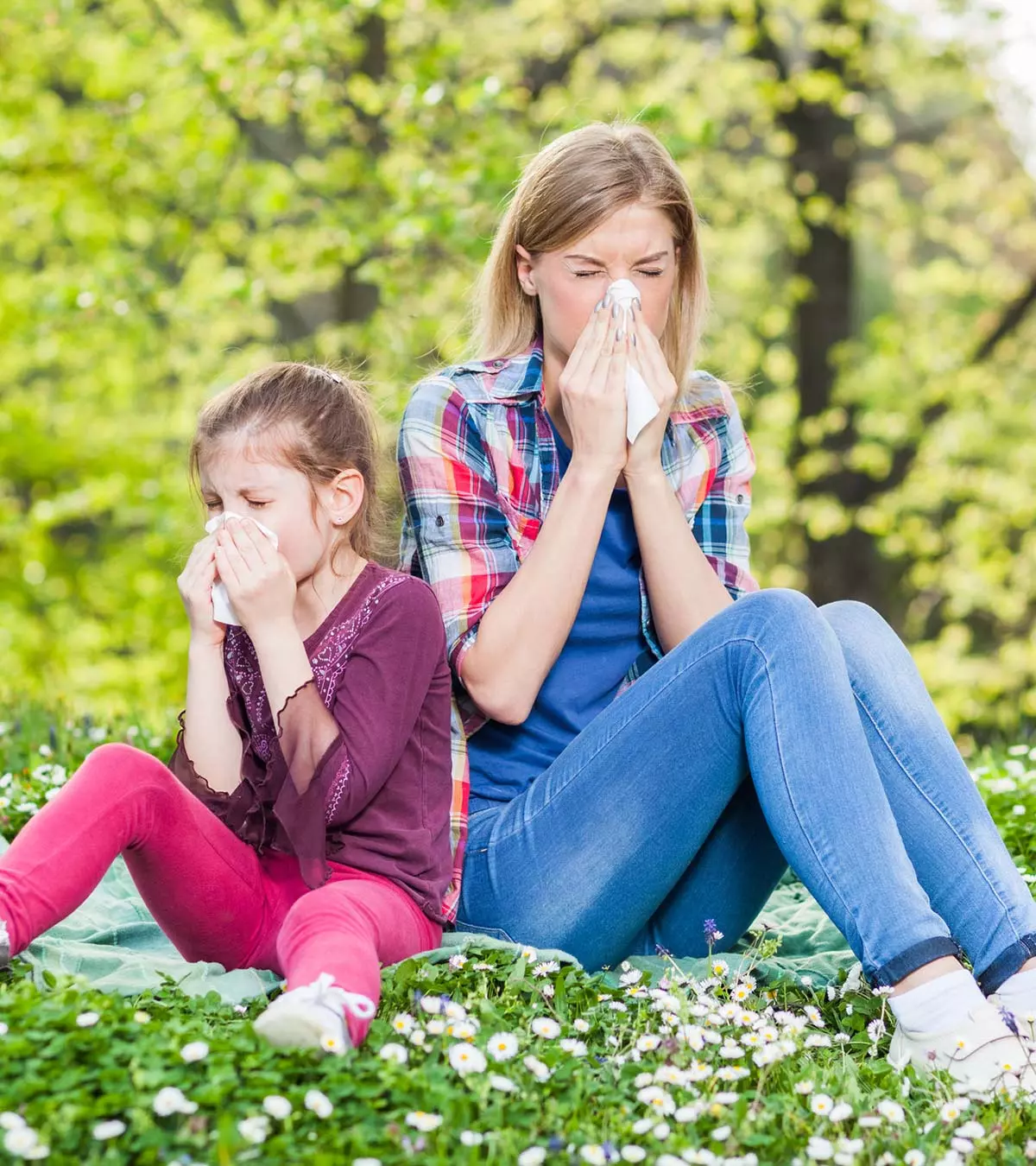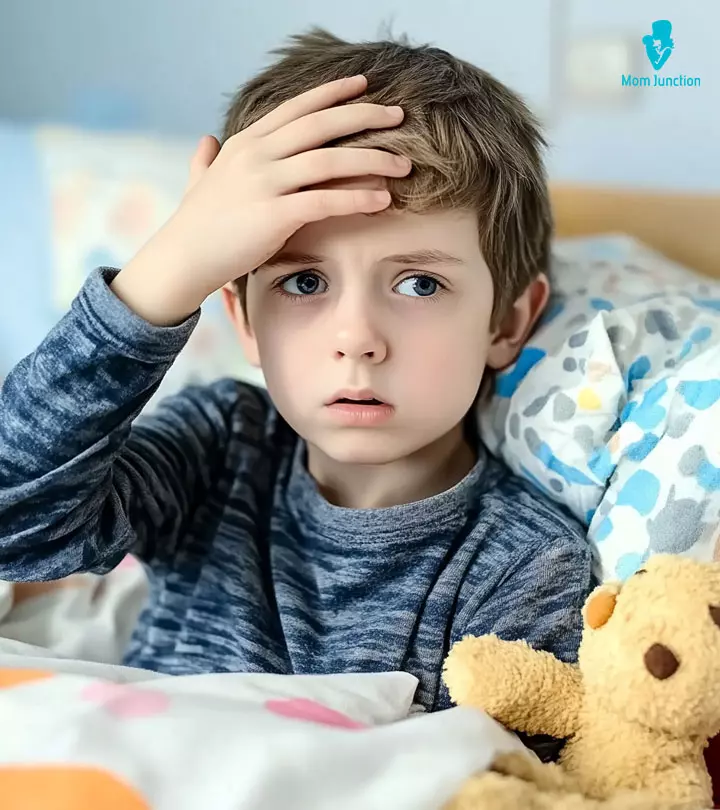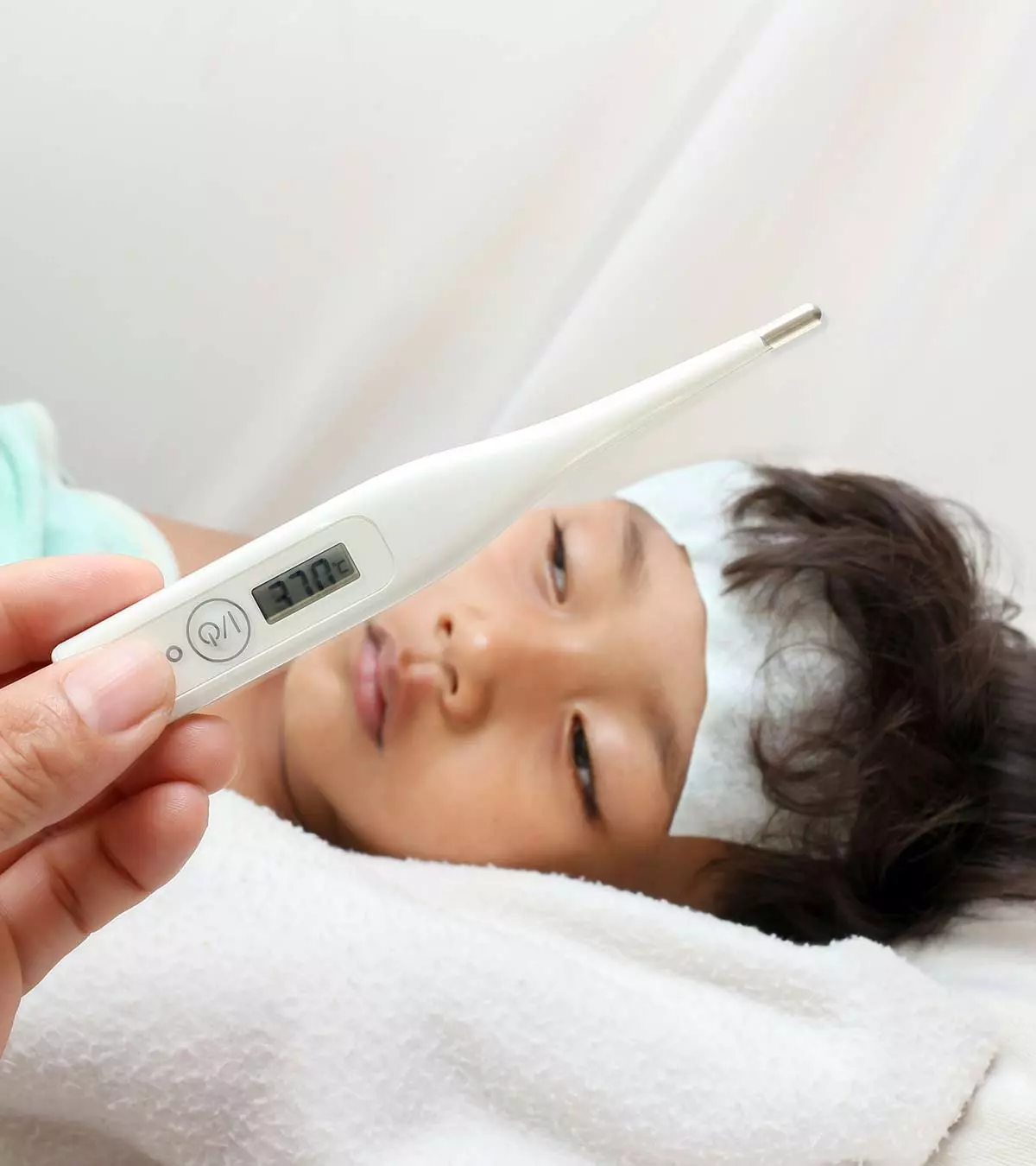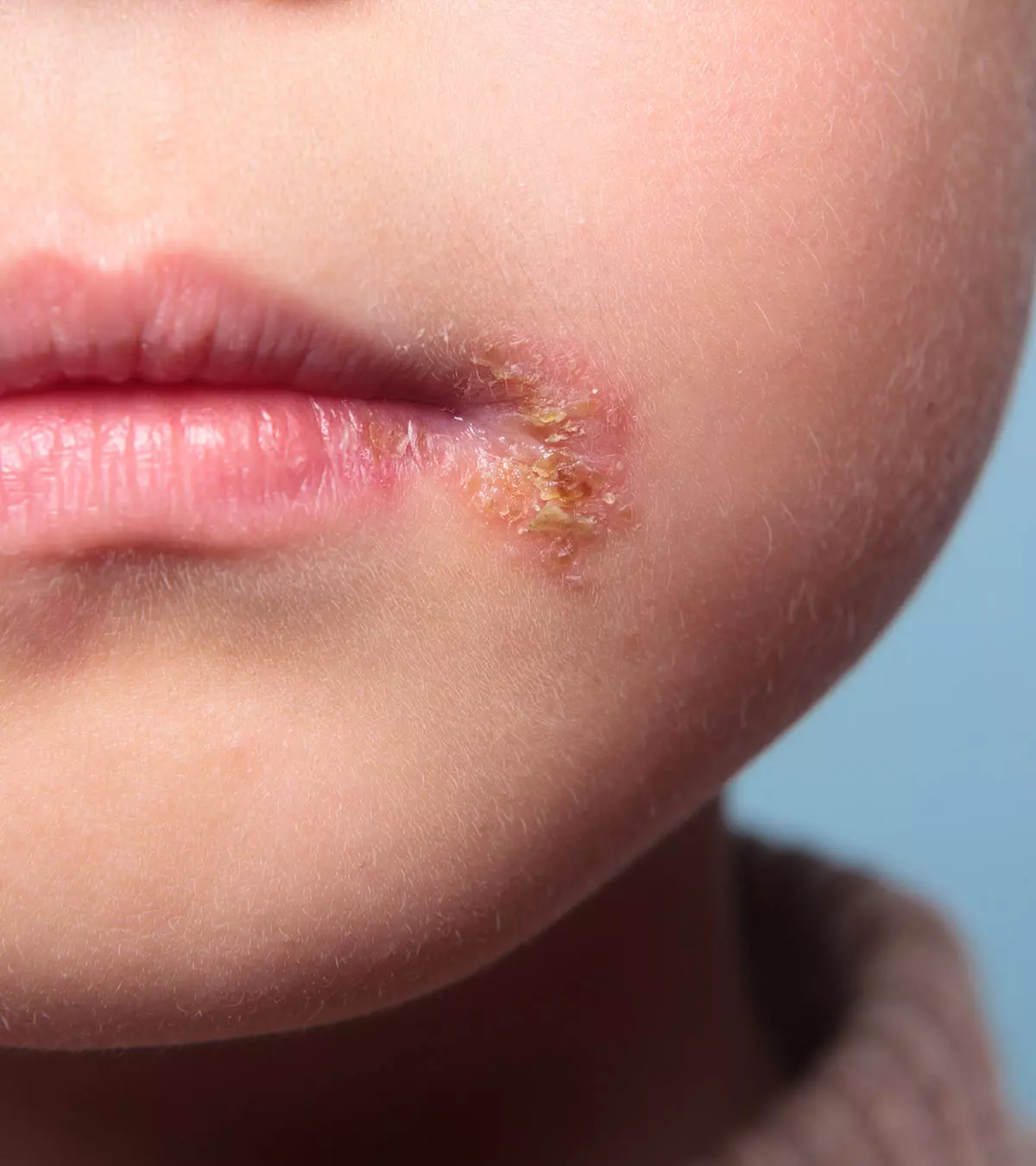
Image: iStock
Impetigo is a bacterial skin infection in children. It is common between the ages of two and five (1). It is important to treat and control impetigo in children since it is highly contagious and causes extreme discomfort. Some may get blisters around the skin that could cause pain. Read on to know more about impetigo, its causes, treatment, and preventive measures in this post.

Key Pointers
- Impetigo is a contagious bacterial skin infection commonly affecting children between two to five.
- It can cause blisters, itchy sores and, in extreme cases, fever.
- Impetigo is usually contracted by close contact with an infected person or through contaminated objects.
- A doctor may advise treatment with antibiotic ointments or oral antibiotics in severe cases.
- The spread of impetigo can be controlled by maintaining proper hygiene and avoiding sharing personal items with infected people.
What Is Impetigo?

Impetigo, also called school sores, is a contagious bacterial skin infection that is prevalent around the world. The infection attacks the superficial epidermis or the topmost layer of the skin on the mouth, nose, hands, trunk, around the diaper area, and legs. It can sometimes spread to the skin under the nails or between skin folds. The infection is contagious and spreads when someone comes in contact with open sores, or liquid or pus that oozes from the blisters, or articles infected with bacteria, or scratching a wound site with nails containing bacteria of impetigo.
The skin turns itchy and painful, causing extreme discomfort to the child. However, they should avoid scratching and touching the affected areas. Children with impetigo should be at home and not mingle with other kids at school or daycare. If the sores cannot be effectively covered, this isolation is to be done for at least seven to ten days or until the lesions settle.
If the infection is only on one part of the body, take proper care to prevent it from spreading. As impetigo is a contagious disease, some children are at a higher risk than others.
Who is at a higher risk of getting impetigo?
While everyone has a chance of getting impetigo, some people are more vulnerable to the bacteria than the others. People of any age can contract the disease; however, when it comes to the pediatric population, impetigo is commonly seen in children from two to five years of age.
- Children aged less than six years as their immune system is not fully developed
- Those attending school or daycare
- Children living in tropical or humid climates
- Those who share towels, beds, blankets, or pillows
- Children taking steroids for a long duration due to some underlying health issues (like nephrotic syndrome)
- During warm and humid seasons
- Children not maintaining general hygienelike washing hands frequently
Impetigo can affect both boys and girls alike. However, knowing what causes the infection is the first step to managing it better.
 Be watchful
Be watchfulWhat Are The Causes Of Impetigo?
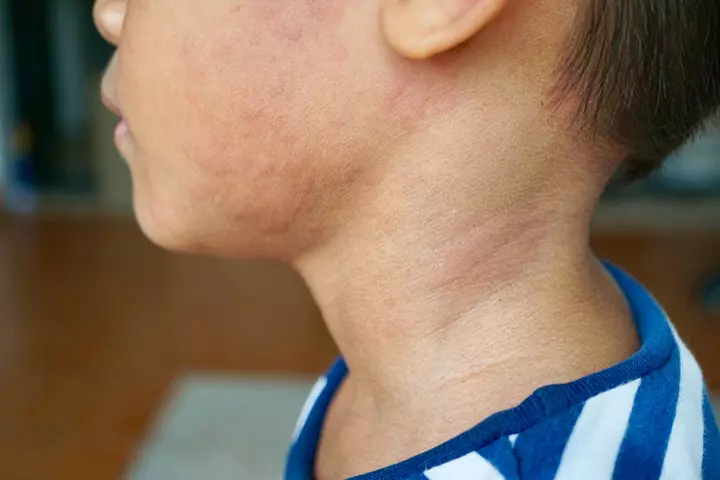
Impetigo is an infectious disease caused by the Staphylococcus aureus (staph) and Streptococcus pyogenes (strep) bacteria, which attack by entering through any cuts, insect bites, and skin rash. When the bacteria transmit from one person to another via touch or close contact, it could infect healthy skin too.
When the infection is caused by both the staph and the strep bacteria, it is called nonbullous impetigo. This is the most common type of impetigo in children and accounts for around 70% of the cases (2).
Another type of impetigo is bullous impetigo, caused only by the Staphylococcus aureus bacteria. Impetigo of this kind is common in children aged less than two years. Mainly characterized by fever and swelling of the glands, this type of staph infection in kids involves larger fluid blisters that develop a characteristic honey-colored crust.
Impetigo can also be classified as primary and secondary. Primary impetigo is when the bacteria enters otherwise healthy skin through a cut or wound, causing inflammation and infection. When impetigo is the result of an underlying skin condition such as eczema, it is called secondary impetigo. Let’s see how you can recognize impetigo from any other skin infection.
 Be watchful
Be watchfulSymptoms Of Impetigo In Children
The skin condition is characterized by the presence of big blisters on the skin. Signs and symptoms of impetigo in kids include (3):
- Large red blisters filled with a fluid, in case of nonbullous impetigo. The infection starts off as small blisters and grows, only to burst and leave patches of red skin that may seep fluid. The red patches eventually turn tan or honey colored spots, which may look like corn flakes stuck to the skin.
- Clear fluid-filled blisters occur on the central part of the body if it is bullous impetigo. They are usually 1-2cm wide in size. These stay longer on the skin and may spread quickly before bursting. They also leave yellow crusts that fade away without scarring.
- Painful and itchy sores around the blisters
- High temperature, although rare

- Swollen glands, also rare
Typically, the impetigo sores start with small red spots, which quickly become large blisters filled with fluid. Also, impetigo is a condition that does not go away independently. Therefore, parents must be aware of the signs and changes in the child’s skin. Immediate medical attention and prompt treatment by a qualified doctor can help children.
Diagnosing Impetigo: What Happens At The Doctor’s?
If you can identify the symptoms listed above, visit the dermatology ward in your nearest clinic. Doctors can diagnose impetigo just by looking at the infected areas of the skin. The doctor will look into the child’s medical history to know for any underlying medical conditions that may be causing the problem. Also, they will check for any recent cuts, bruises, and wounds on the skin that could have paved the way for the bacteria into the body.
To confirm if the child has impetigo and not any other skin condition such as scabies, the doctor may recommend a swab test. Swab tests check the severity of the infection and determine which antibiotics work best. This test also checks for infections such as ringworm and shingles.
In a few situations, a child may be advised blood tests to see for the severity of infection and requirement of oral /intravenous antibiotics.
Only after proper diagnosis will the doctor be able to recommend the right course of treatment for the child.
How To Treat impetigo In Children?
The treatment aims at hastening the healing process through a skin care regime and use of antibiotics in some cases. Treatment measures also include:
- Maintaining a hygienic skin care routine. This includes keeping the skin clean, which helps mild infections heal faster.
- Washing blisters with a skin-friendly soap, under running tap water.
- Mild yellow patches can be washed using clean water.
- Topical treatments like antibiotic ointments, including retapamulin and mupirocin, may be prescribed in some cases (1). For most people, mupirocin alone helps in treating the infection (4).

- Oral antibiotics such as amoxicillin, cloxacillin, and cephalosporins are also prescribed for treating severe cases of impetigo. Antibiotics work only when the entire course, as prescribed by the physician, is followed (5).
The best course of treatment would be a combination of medications or topical ointments combined with skin care at home.
YouTuber and a mom of three boys shares how they misunderstood impetigo as a spider bite on one of her identical twins just when they moved to Costa Rica. She shares, “We started noticing a few spots on different parts of his legs, and then the next day, he had spots on his face, and so that’s when we knew it was something more than a spider bite.
She shares about the treatment, “We took him (her son) back to the pharmacy, and they prescribed him an oral antibiotic. After 48 hours on the oral antibiotic, it started to clear up. We had to be very careful with sanitizing linens, the towels, the bed sheets, the stuffed animals for two weeks after that because it kept trying to pop up on different spots of his body (i).”
You can identify the healing process as yellow, crusted, honey-colored scabs that start to form over the sore. Using the above treatment options can help in healing them and reducing the discomfort to your little one.
Complications Of Impetigo In Children
In rare cases, impetigo can lead to some complications, which include (11):
- Scarlet fever: A bacterial infection that leads to pinkish to reddish color rashes in children. These skin rashes in children often appear on the neck, underarms, and groin areas before spreading throughout the body. The symptoms usually arise after two to five days of infection. Besides the rashes, the infection also accompanies nausea and vomiting, and swelling of neck glands (12).
- Cellulitis: An infection that develops into the deep layers of the skin. It affects the legs, arms, mouth and anus. Some common symptoms include headaches, pain, chills, redness and swelling of the skin and fever (13).
 Point to consider
Point to considerTips To Prevent And Control Spreading Of Impetigo
No person can be 100% immune to impetigo. Anyone who is exposed to the bacteria may have a chance of developing it. However, the chances of a child developing impetigo infection can be reduced with these precautionary measures.
- Do not scratch or pinch the blisters to prevent the fluid from spreading the bacteria.
- Teach your children not to touch the sores and blisters, and encourage frequent handwashing.
- Keep away from people who have impetigo.
- Do not share towels, beds, water bottles, plates, tumblers, soaps, and toys with kids who have impetigo.
- Do not send the child to daycare or school when he or she has impetigo.
- If you have touched the infected area, wash your hands immediately.
- Always wash anything, such as towels, hankies, clothes, etc., that has touched the infected part.
- Bathe the child regularly.
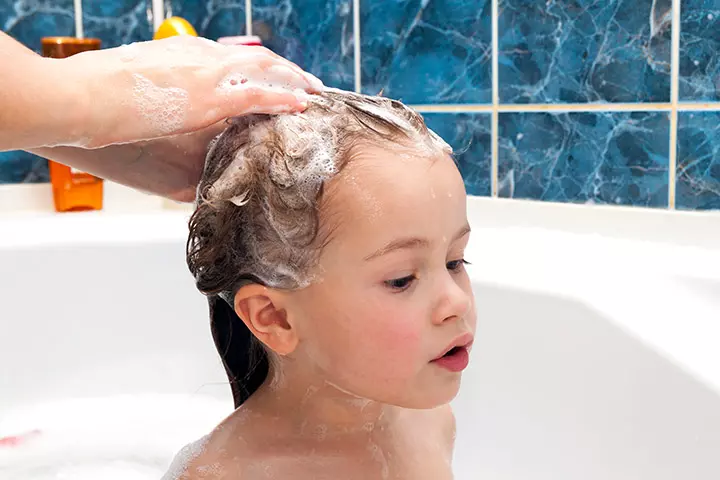
- Always wear disposable gloves when cleaning the sores and applying topical ointments to the infected areas.
- Keep the soap clean.
- Cut the nails short and keep them clean.
- If the child has a wound, insect bite, or cut on the skin, keep it covered and clean and do not let the child scratch it, as that increases the chances of bacteria entering the body.
Maintaining proper hygiene is very important to prevent spreading the infection. Remember that a child infected with this infection will be contagious until the sores are healed or at least 48 hours after the treatment has started and the medications have started working.
You can also make use of some home remedies for impetigo, along with the medical treatment.
Do Home Remedies Work For Impetigo Work?
No home remedies should be tried in the case of a contagious skin disease like impetigo. Rather, the affected area be covered after dressing as much as possible. Eating antioxidant rich foods and citrus fruits can help heal the lesions faster.
Frequently Asked Questions
1. What conditions can be mistaken for impetigo?
Impetigo is sometimes mistaken for methicillin-resistant staphylococcus aureus (MRSA) infections when it starts to look sore and red (6). Weeping eczema may also look like impetigo when it appears on the nose or mouth and develops pus-filled blisters (7). Other conditions that may be mistaken for impetigo are fever blisters, burns, and rash (8).
2. Does petroleum jelly help with impetigo?
Yes, you may apply petroleum jelly to the affected area and around it to soothe and relieve the damaged skin (9).
3. How long does the Impetigo infection typically last?
The duration of an impetigo infection can vary depending on various factors, including the individual’s overall health, the severity of the infection, and the effectiveness of treatment. When your child receives treatment, they typically become non-contagious within 48 hours. Although the sores may require some time to fully heal, the infection seldom causes scarring. If left untreated, impetigo may resolve naturally within a few weeks. However, there is a higher likelihood of experiencing complications and noticing the emergence of new sores and blisters (15).
4. Is impetigo more common in certain climates or geographical regions?
Impetigo is a common bacterial skin infection that can occur in any part of the world and is not specifically limited to certain climates or geographical regions. Although impetigo can happen in any climate, warm and humid environments can create conditions that favor bacterial growth and transmission. Impetigo is more likely to occur in settings with close contact between individuals, such as schools and daycares. In regions with densely populated areas or where hygiene practices may be challenging, the risk of impetigo transmission can be higher (16).
Impetigo in children is common and seldom a concerning issue. However, it is a contagious bacterial infection and needs to be managed adequately to stop its spread and lessen the discomfort. If your child is less than five years of age and you notice them itching and have pus-filled blisters on their skin, get it checked by their doctor immediately. A course of antibiotics and some effective home management techniques such as eating healthy and maintaining appropriate hygiene can help speed up the recovery process. But it is better to follow the prevention steps to avoid such discomforts altogether.
Infographic: How To Prevent The Spread Of Impetigo In Children?
Impetigo can spread from children to adults or other children if not handled well. Adequate care measures prevent the spread and reinfection. Go through the infographic to learn ways to prevent the spread of impetigo in children.
Some thing wrong with infographic shortcode. please verify shortcode syntax
Illustration: Impetigo In Children: Symptoms Treatment And Prevention
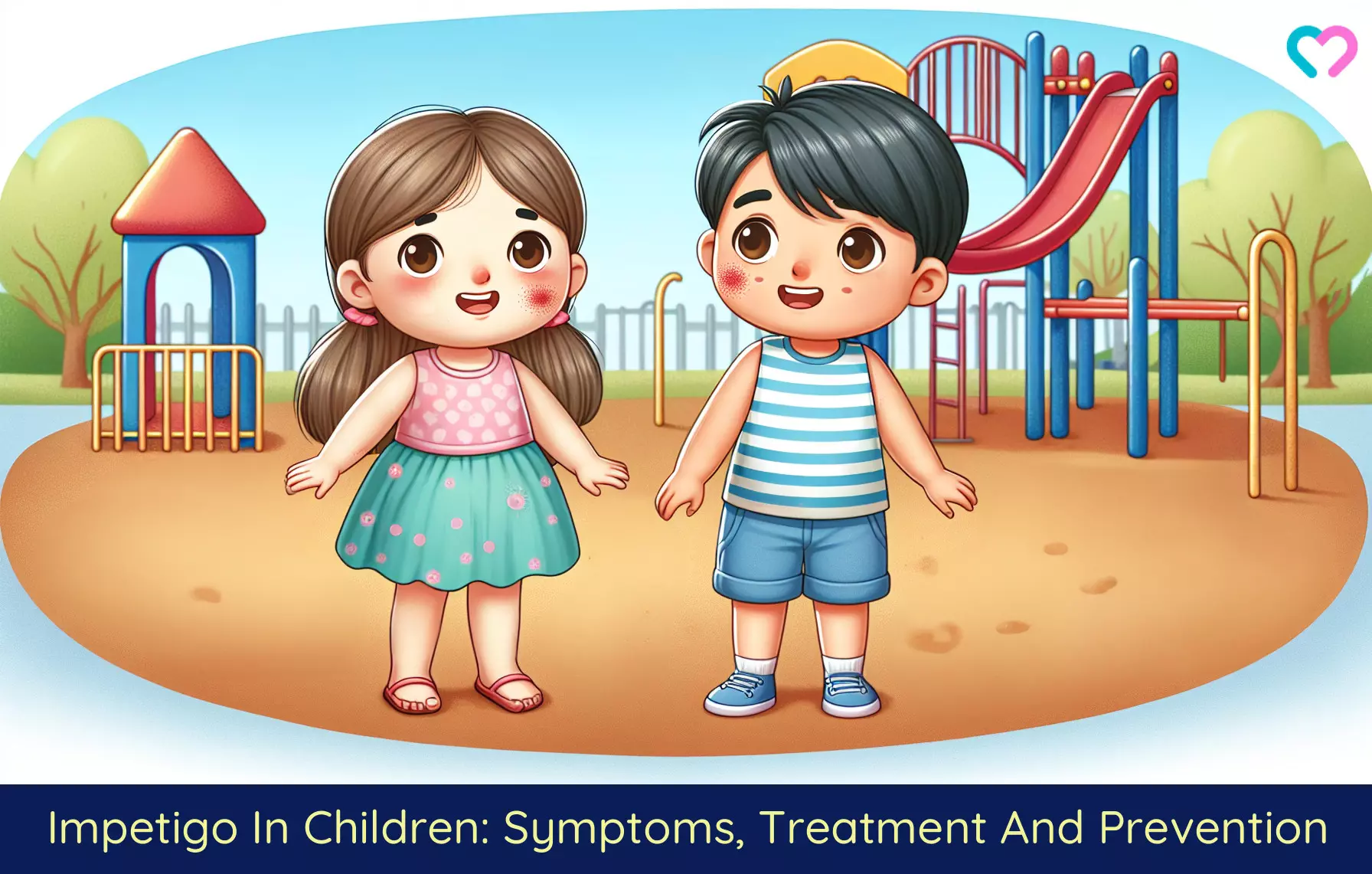
Image: Dalle E/MomJunction Design Team
Impetigo is a bacterial infection caused in children. This video provides valuable insights into the causes, symptoms, diagnosis, and treatment
Personal Experience: Source
MomJunction articles include first-hand experiences to provide you with better insights through real-life narratives. Here are the sources of personal accounts referenced in this article.
i. Impetigo in Costa Rica;https://www.youtube.com/watch?feature=shared&v=qWyFAAFsILo
References
- Diagnosis and Treatment of Impetigo
https://www.aafp.org/pubs/afp/issues/2007/0315/p859.html - Holly Hartman-Adams et al.; Impetigo: diagnosis and treatment
https://pubmed.ncbi.nlm.nih.gov/25250996/ - Impetigo
https://www.nhs.uk/conditions/impetigo/#symptoms-of-impetigo - Impetigo: What can make it go away faster?
https://www.ncbi.nlm.nih.gov/books/NBK279536/ - Diagnosis and Treatment of Impetigo
https://www.aafp.org/pubs/afp/issues/2007/0315/p859.html - What Does MRSA Look Like?
https://www.hopkinsmedicine.org/health/conditions-and-diseases/what-does-mrsa-look-like - Weeping Eczema.
https://my.clevelandclinic.org/health/diseases/21991-weeping-eczema - Impetigo: What You Should Know.
https://www.aafp.org/pubs/afp/issues/2007/0315/p868.html - Staphylococcal Scalded Skin Syndrome.
https://rarediseases.org/rare-diseases/staphylococcal-scalded-skin-syndrome/ - Naomi M. Nardi and Timothy J. Schaefer; Impetigo.
https://www.ncbi.nlm.nih.gov/books/NBK430974/ - Impetigo.
https://www.nhsinform.scot/illnesses-and-conditions/infections-and-poisoning/impetigo - Scarlet Fever.
https://www.nhsinform.scot/illnesses-and-conditions/infections-and-poisoning/scarlet-fever/#:~:text=Scarlet%20fever%20usually%20follows%20ato%205%20days%20after%20infection. - Cellulitis.
https://www.hopkinsmedicine.org/health/conditions-and-diseases/cellulitis#:~:text=Cellulitis%20is%20a%20deep%20infectionbreak%2C%20including%20trauma%20or%20surgery. - Impetigo in Children.
https://www.cedars-sinai.org/health-library/diseases-and-conditions—pediatrics/i/impetigo-in-children.html - Impetigo
https://my.clevelandclinic.org/health/diseases/15134-impetigo - About Impetigo
https://www.cdc.gov/group-a-strep/about/impetigo.html?CDC_AAref_Val=https://www.cdc.gov/groupastrep/diseases-public/impetigo.html
Community Experiences
Join the conversation and become a part of our nurturing community! Share your stories, experiences, and insights to connect with fellow parents.
Read full bio of Dr. Charu Kalra
Read full bio of Dr. Ritika Shah
Read full bio of Swati Patwal
Read full bio of Ghazia Shah






